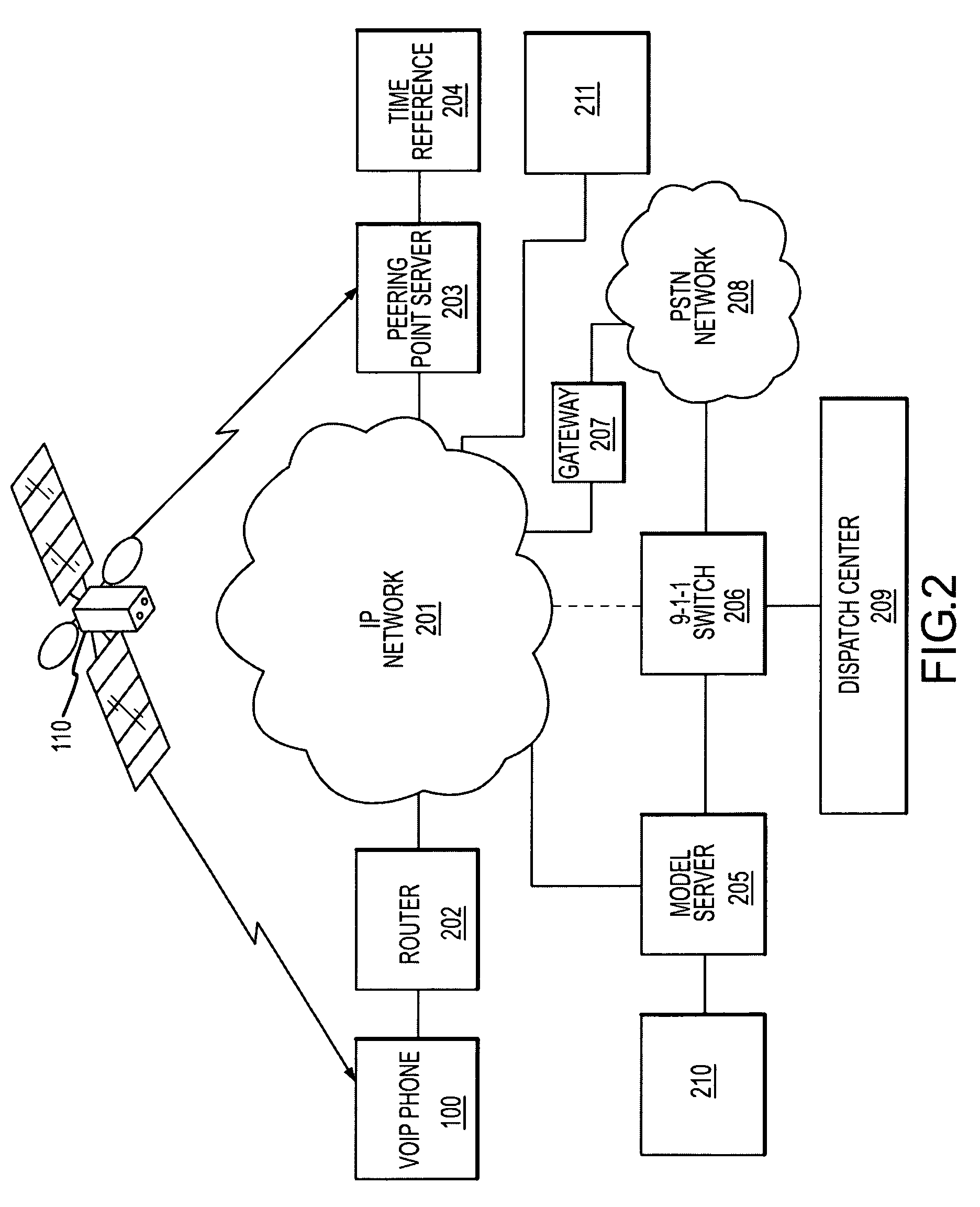System and methods for IP and VoIP device location determination
a technology of system and method, applied in the field of system and method for determining the position of ip and voip devices, can solve the problems of no single current provider has a network plant, and no current provider can intelligently geo-reference to either network
- Summary
- Abstract
- Description
- Claims
- Application Information
AI Technical Summary
Benefits of technology
Problems solved by technology
Method used
Image
Examples
Embodiment Construction
[0048]In the following description, the invention is generally set forth in the context of a Voice Over Internet Protocol (VoIP) device attached an Internet Protocol (IP) network receiving signals from the Global Positioning System operated by the U.S. military (GPS). Indeed, the invention has a number of benefits and provides useful results in this regard. However, it will be appreciated that various aspects of the present invention are not limited to VoIP devices, IP network applications or systems receiving signals from the GPS. Accordingly, the following description should be understood as exemplary of the invention and not by way of limitation.
[0049]The determination of the location of a device connected to a computer network is useful in many regards. To achieve this determination, a device is provided herein that is capable of receiving signals from a positioning system and interfacing with a computer network. Aspects of a device having such capabilities will be described alo...
PUM
 Login to View More
Login to View More Abstract
Description
Claims
Application Information
 Login to View More
Login to View More - R&D
- Intellectual Property
- Life Sciences
- Materials
- Tech Scout
- Unparalleled Data Quality
- Higher Quality Content
- 60% Fewer Hallucinations
Browse by: Latest US Patents, China's latest patents, Technical Efficacy Thesaurus, Application Domain, Technology Topic, Popular Technical Reports.
© 2025 PatSnap. All rights reserved.Legal|Privacy policy|Modern Slavery Act Transparency Statement|Sitemap|About US| Contact US: help@patsnap.com



